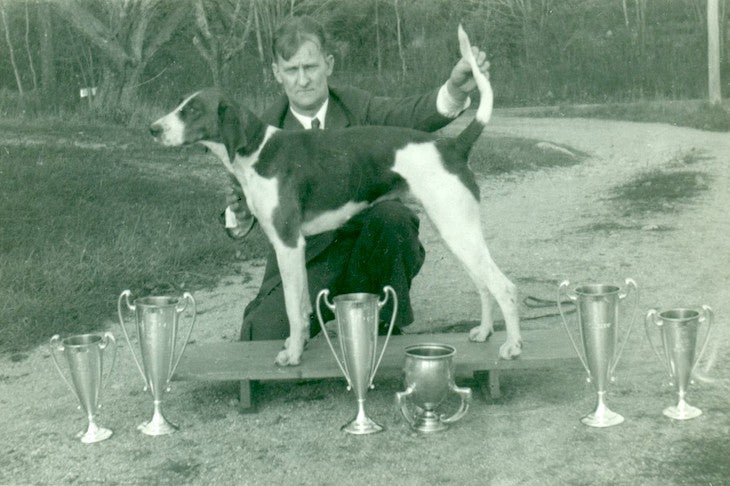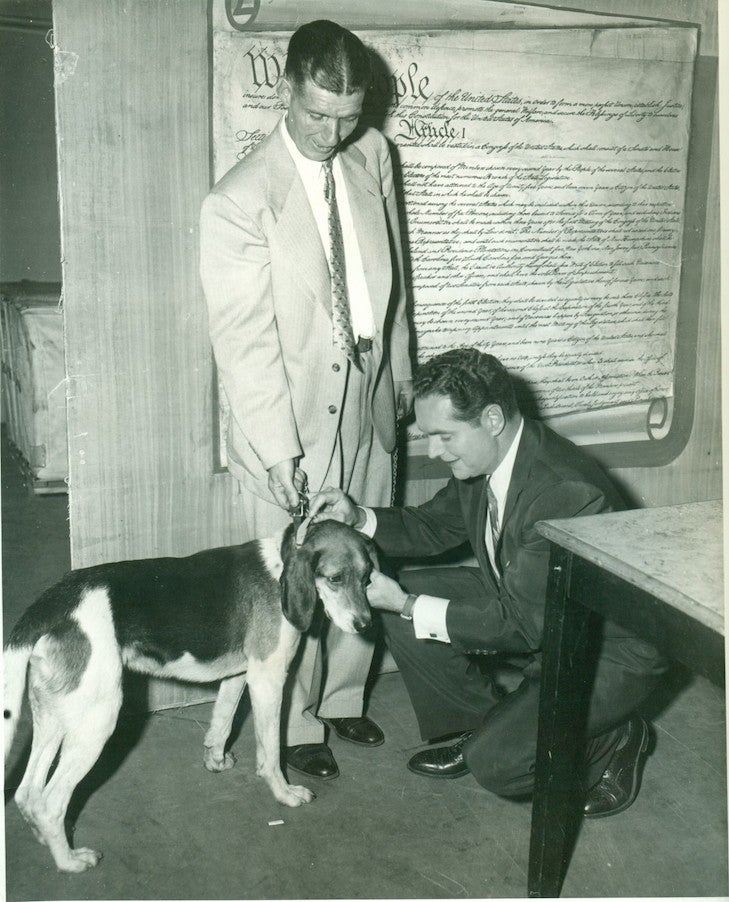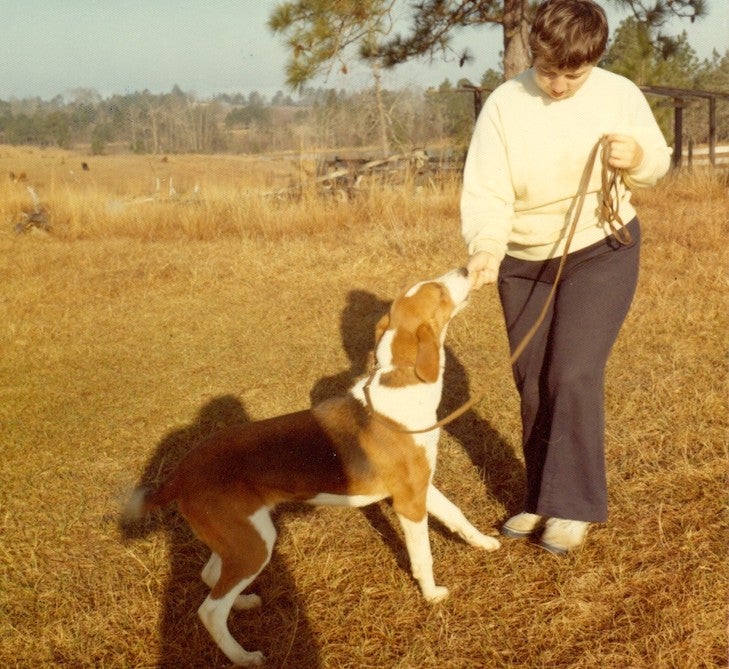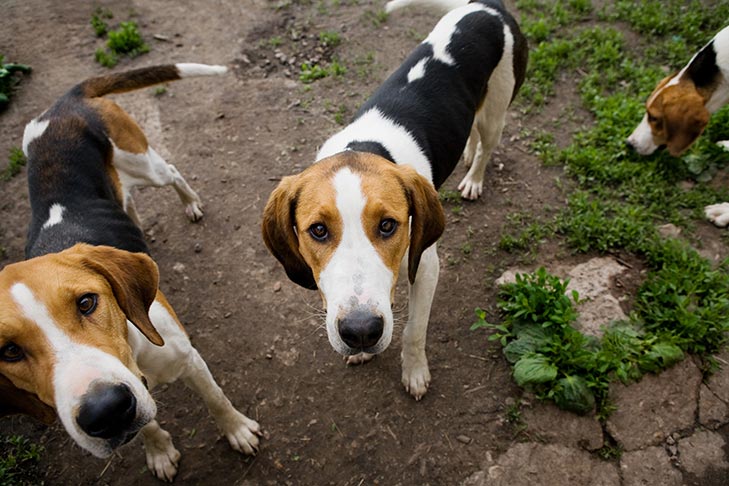
Though we often don’t think about them in this way, dogs are really about people — those long-ago (or, sometimes, not so long-ago) figures who developed particular breeds for particular tasks. Some breeds — like the Doberman Pinscher, Teddy Roosevelt Terrier, and Cesky Terrier — owe their existence to just one visionary person. Other breeds were brought into being by specific cultures or classes of people.
If civilization is the intersection of a group of people with their environment, so too are their dogs: With coats that evolved to survive the local climate, body styles developed to navigate native terrains, and characters that fit into the social mores of the day, our purebred dogs are living, breathing moments of history, reflections of the far-flung cultures that developed and nurtured them. Through them, we rediscover our globe’s cultural diversity and heritage.
Each week, without even leaving our couches, we travel to a different place and time to meet the people who developed the snoozing bundles of fur at our sides.
***
When American colonists declared their independence from Great Britain almost 250 years ago, they realized they needed a new form of governance, a new monetary system, and a new national identity.
Some also decided they had to have a new foxhound, too.
Dogs have always been part of the American experience, accompanying the very first Englishmen to the New World in the form of a Mastiff and spaniel aboard the Mayflower. In short order, hounds followed. In 1650, Maryland-bound settler Robert Brooke arrived with his family, 28 servants, and a pack of hounds.
Imported with these British breeds was a sporting passion for hunting fox on horseback. But the English Foxhound, with his relatively heavy bone, was built for a hedgerow-dotted countryside – not the vast expanses of this new American experiment, where the vistas were seemingly as limitless as the nascent nation’s prospects. A faster hound was needed, one able to move with greater speed and cover more ground.

“Virginia Hounds”
One of the first Americans to realize this was also our first president: A devoted breeder and fox hunter, George Washington kept dozens of dogs his Mount Vernon home, inspecting his kennels at the beginning and end of each day. Over his lifetime, Washington owned breeds from all seven AKC variety groups: Sporting (pointers and spaniels), Non-Sporting (Dalmatians, including a particularly amorous one named Madame Moose), Toy (Italian Greyhounds), Terrier (he called them “tarriers”), Herding (Briards), Working (Mastiffs and Newfoundlands) and, of course, Hound – his own strain of black-and-tan English Foxhounds, said to have descended from those of Brooke a century earlier.
In his writings, Washington mused about how to improve his pack, which he called “Virginia Hounds.” He hoped to breed “a superior dog, one that had speed, sense, and brains” – not coincidentally, the same qualities needed for their human corollaries to succeed in the New World.
Washington seemed to have been approaching that goal with Sweet Lips, a female he brought with him to Philadelphia while representing Virginia as a delegate to the Continental Congress. (Washington had a sentimental streak when it came to naming his females, which included Venus and Truelove. The males got bacchanalian names, like Taster, Tippler and Drunkard.)

The Value of a Good Hound
When Elizabeth Willing Powel, wife of the powerful mayor of Philadelphia, first saw master and hound walking down Walnut Street in 1774, she noted the regal presence of both: “His movements and gestures are graceful, his walk majestic, and he was walking with a tall, exceedingly graceful dog of the hound type …”
When Powel inquired about Sweet Lips, Washington replied that she was a “perfect foxhound,” and expressed his disappointment at not being able to hunt with her in Philadelphia. In short order, Powel introduced Washington to her husband Samuel, who not only arranged for him to ride to the hounds in nearby New Jersey, but also introduced the poised Virginian to the colonial powerbrokers who would later support his appointment to head the Continental Army.
Were it not for Sweet Lips and the series of introductions she inadvertently triggered, we might not be calling ourselves Americans today.
Like his military victories, Washington’s development of the American Foxhound was aided by the Marquis de Lafayette. The French general, who commanded American troops during the Revolutionary War, came from an aristocratic family, and knew the value of a good hound. In May 1875, he sent Washington seven massive hounds, a gift from his gentleman friend Count d’Oilliamson in Normandy.
The Translatlantic Journey
It’s generally said that these hounds were Grand Bleu de Gascogne, an ancient French breed that dates back to the Middle Ages. The count, however, referred to them as Normandy Hounds.
Whatever their pedigree, the hounds were accompanied on their transatlantic journey by 18-year-old John Quincy Adams, who in his rush to get to Harvard left them on a New York dock after disembarking. Much annoyed, Washington had them transported by carriage to Virginia.
But the founding father would have been forgiven for questioning whether he had wanted them to arrive at all: Though Washington likened their voices on the bay to “the bells of Moscow,” their temperaments were not so pleasing. They battled so fiercely over food at mealtimes that a servant was at hand to keep the peace. Most were at first unremarkable hunters, following a trail “slow and indifferently,” if at all, Washington complained, though the pack’s performance eventually improved, presumably with acclimation to their new terrain.
And they were, apparently, huge. Washington’s step-grandson, who was four when the French imports arrived, remembered that they “were of great size … and from their strength, were fitted, not only to pull down the stately stag, but in combat to encounter the wolf or boar, or even to grapple with the lordly lion.

The Modern American Foxhound
Lafayette had told Washington that the count’s hounds were too slow for the French nobility, who had taken to importing faster English Foxhounds. But he also reminded his American friend that they offered something quite valuable: A solid, carefully curated bloodline that would provide reliability and quality.
And in this Lafayette was right: Washington crossed the French hounds with his lighter-built Virginia pack, resulting in dogs with good size and speed that eventually evolved, with the tinkering of later breeders, into the modern American Foxhound.
Purebred dogs invariably reflect the cultures that created them, and Washington’s new version of the classic British foxhound was no different, symbolizing the emergence of a fledgling nation – more independent and less pack-oriented than its English progenitors, and better adapted to large expanses and free-wheeling environs.
And fittingly, it provided a springboard for still more native hounds. As Americans pushed westward into new territories like Ohio and Tennessee, hunters continued to breed hounds adapted to the specific terrain in which they ranged and the specific game they hunted. And so as the patchwork that became the United States grew, the American Foxhound became the basis for many of the later Coonhound breeds, including the Treeing Walker, American-English, and Bluetick.
By George, a real American success story.
Curious about your dog’s history? Purchase an AKC Certified Pedigree to access your dog’s official family tree. Learn if they have a Champion bloodline, discover foreign ancestors, and see any recorded health certifications. Handsomely printed, our AKC Certified Pedigree is available for purchase online with up to four generations.

